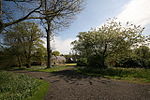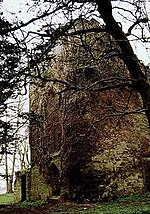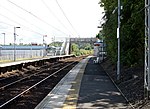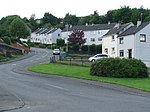Cardross railway station
Category C listed buildings in Argyll and ButeFormer North British Railway stationsListed railway stations in ScotlandPages with no open date in Infobox stationRailway stations in Argyll and Bute ... and 4 more
Railway stations in Great Britain opened in 1858Railway stations served by ScotRailSPT railway stationsUse British English from September 2015

Cardross railway station is a railway station serving the village of Cardross, Scotland. The station is 19 miles 50 chains (31.6 km) from Glasgow Queen Street, measured via Singer and Maryhill. It is on the North Clyde Line between Dalreoch and Craigendoran, positioned on the banks of the north side of the River Clyde. The station is managed by ScotRail, who operate all services.
Excerpt from the Wikipedia article Cardross railway station (License: CC BY-SA 3.0, Authors, Images).Cardross railway station
Borrowfield,
Geographical coordinates (GPS) Address Nearby Places Show on map
Geographical coordinates (GPS)
| Latitude | Longitude |
|---|---|
| N 55.9601 ° | E -4.6526 ° |
Address
Cardross
Borrowfield
G82 5NW
Scotland, United Kingdom
Open on Google Maps







